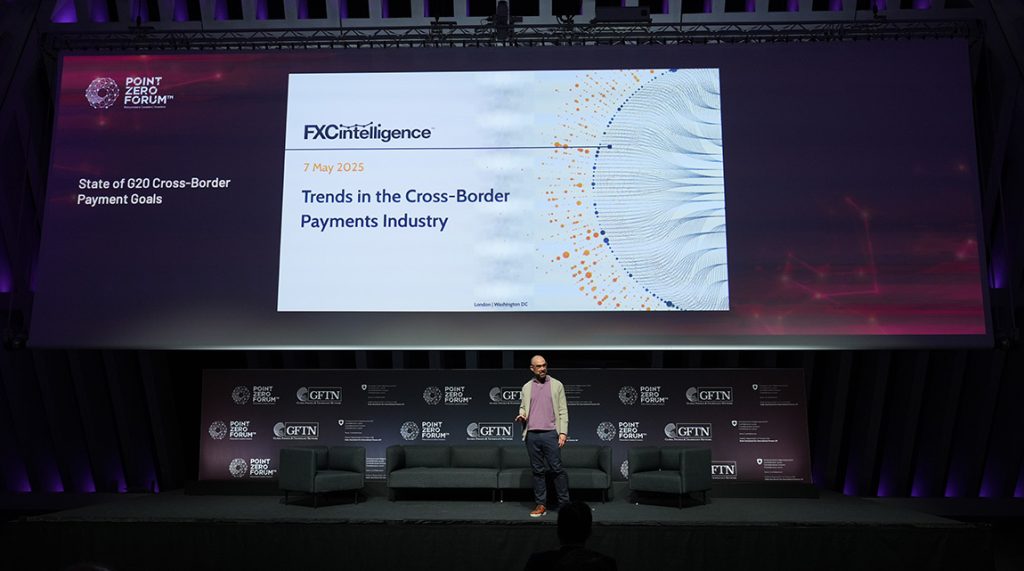This week also saw the policy side of the payments world come together for Point Zero Forum in Zurich, Switzerland, where leaders from many fintechs, central banks and financial institutions met to discuss the future development of the industry. While I met many of you in person, our VP of Cards & Global Indices, Ian Manns, was also in attendance, presenting a talk on performance against the G20 Roadmap for Enhancing Cross-Border Payments’ 2027 targets and key trends in the cross-border payments industry.

Leading data collection for the G20 Roadmap’s retail KPIs, Ian is a leading expert on the space and how it is moving against industry benchmarks. Here are some of the key takeaways from his talk:
- Cross-border retail payments – which covers B2B, B2C (B2P), C2B (P2B) and C2C (P2P) payments – is a giant market that is set to grow significantly by 2032, but that doesn’t necessarily mean that G20 targets around cost, speed and transparency will be met.
- At present, all forms of retail cross-border payments have global average transaction costs significantly above the 1% target for 2027, while many corridors remain above the maximum of 3% costs, meaning that there will need to be significant drops across the industry if it is to be met.
- Europe and South Asia have the lowest costs for cross-border P2P payments, although are still significantly above the 1% target, at 2% and 2.5% respectively. Latin America and Sub-Saharan Africa, meanwhile, have the highest share of corridors still above 3% of total costs, with more than three-quarters of the former’s corridors above the threshold.
- Speed and transparency also remain distant targets. While 75% of services should arrive in under one hour by 2027, this currently stands at 34% – unchanged from the previous year – while the target of 100% of services with complete cost and speed visibility is also unreached, at 56%.
- However, there are positive signs. Real-time payments infrastructure is advancing quickly and growing consumer expectations along with it, while stablecoins are presenting new revenue opportunities and drawing industry attention. Greater partnering, particularly by banks, is also increasing the capabilities that businesses and consumers have access to.
- The current trade tariffs and political turmoil present headwinds – but there are significant opportunities to advance in alignment with the G20 Roadmap, even if the 2027 target is missed.
How is FXC Intelligence’s data being used to inform the G20 Roadmap?


